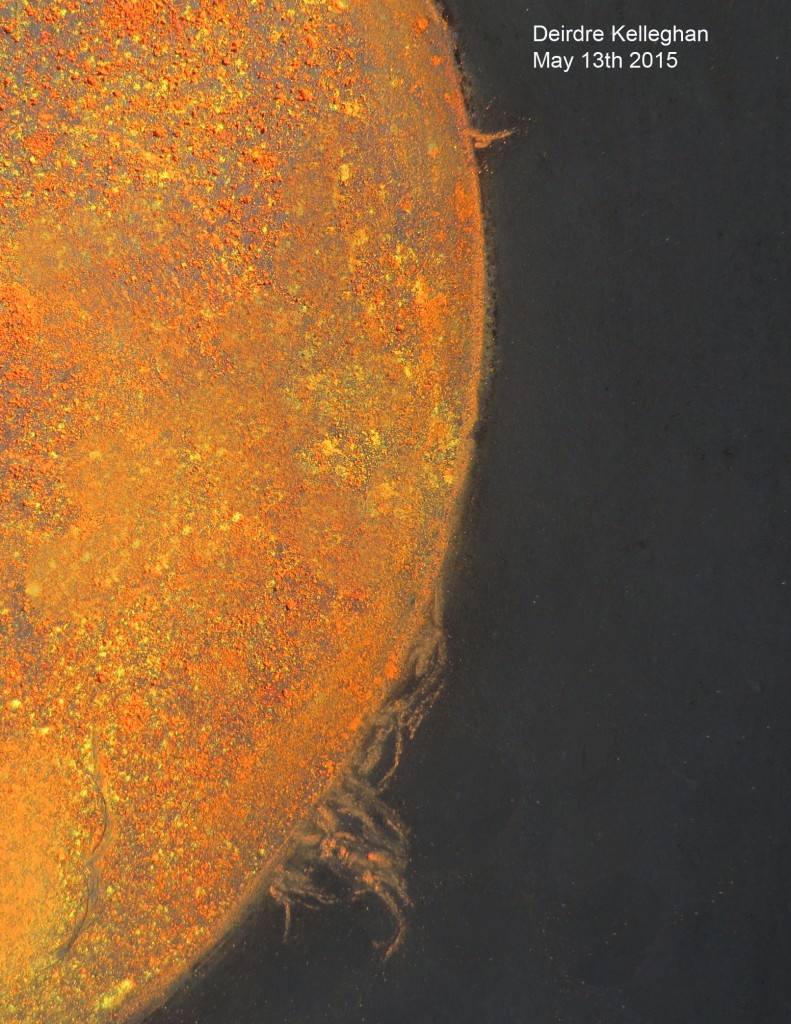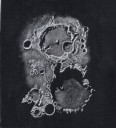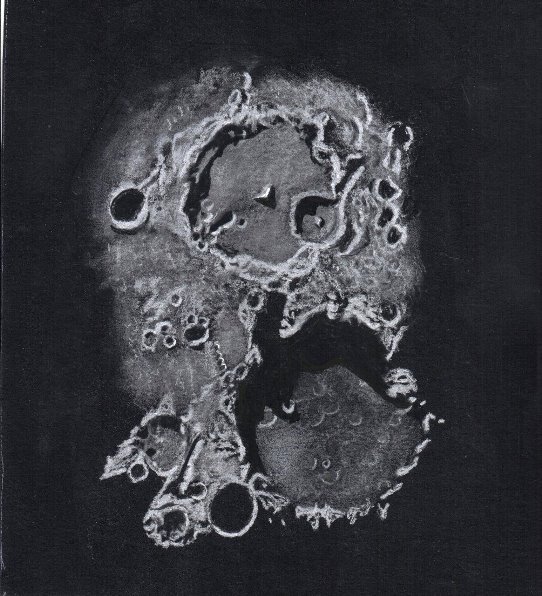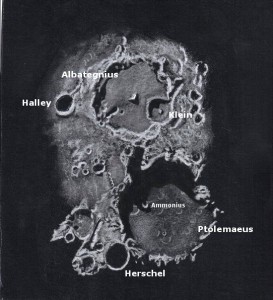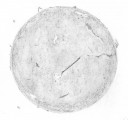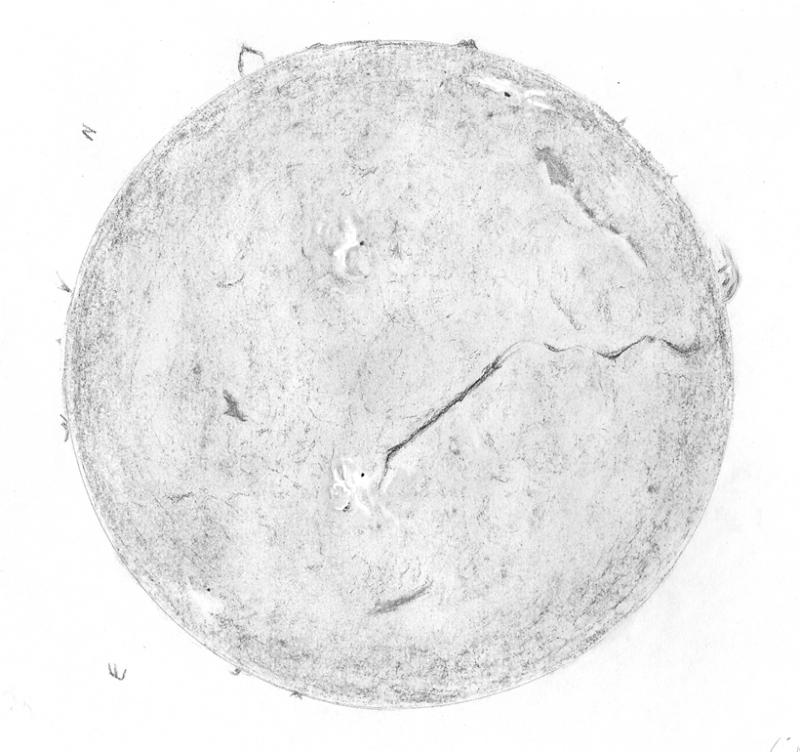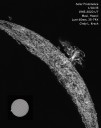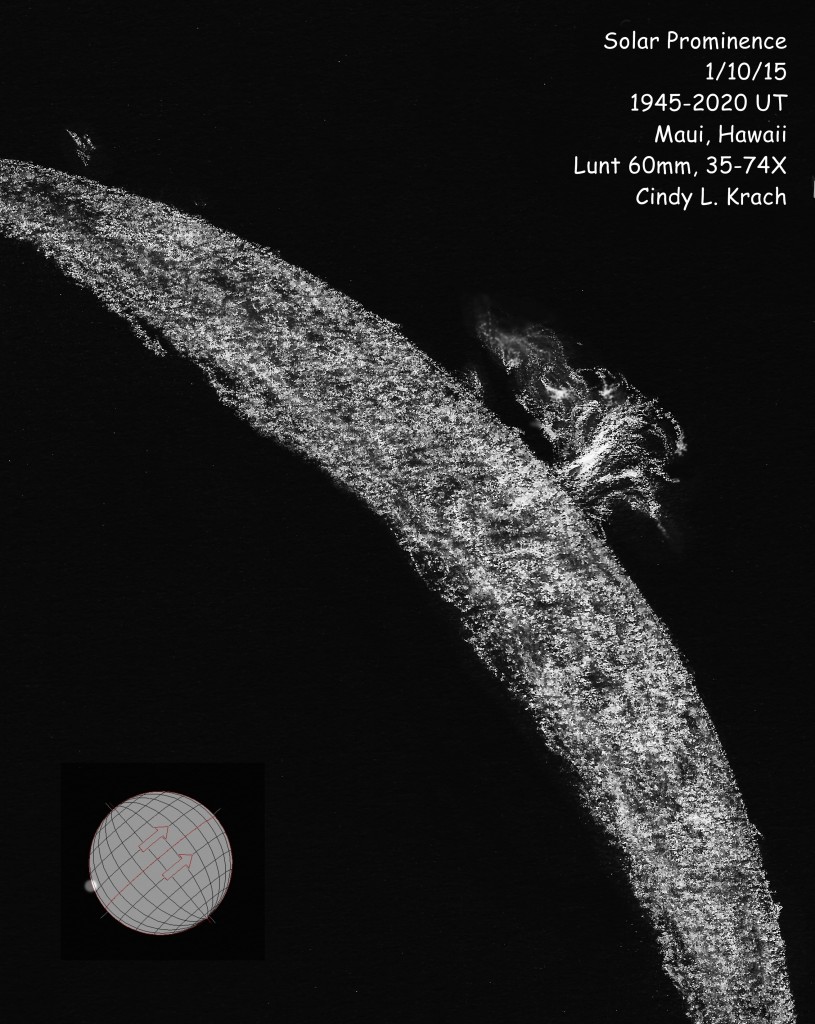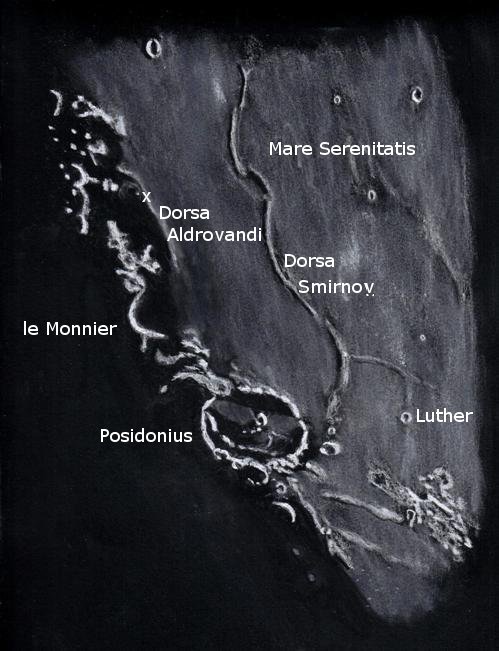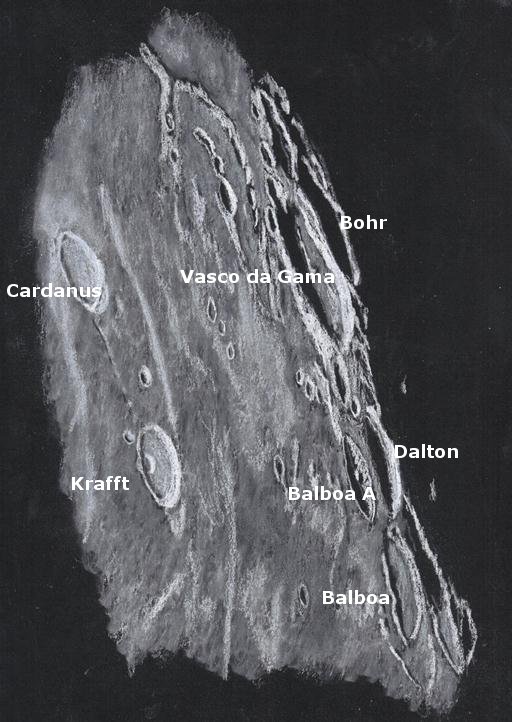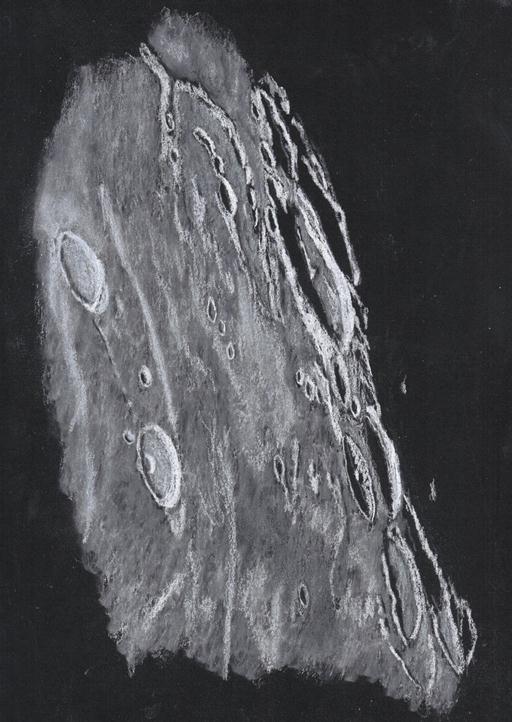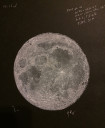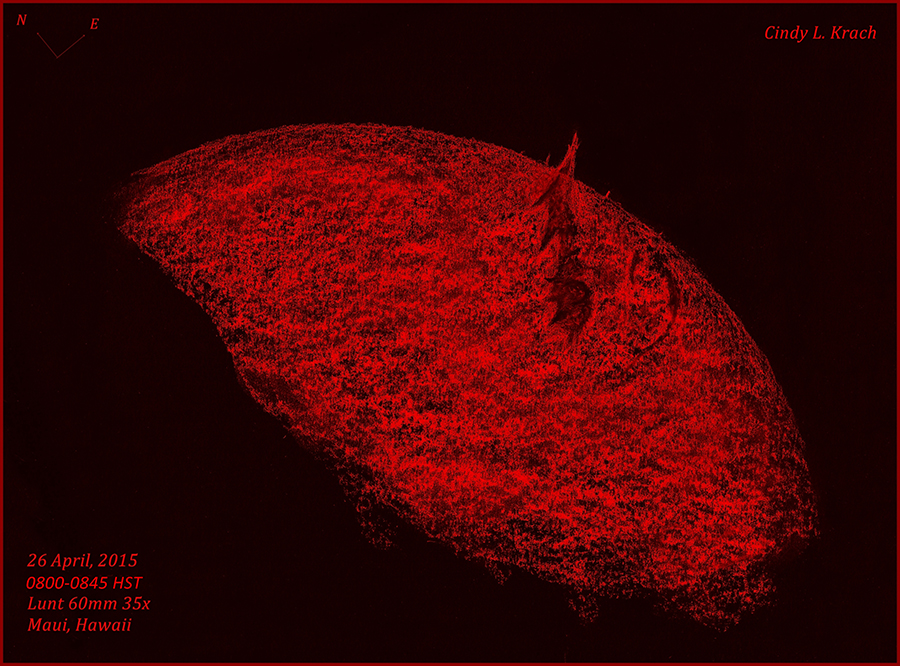
Aloha!
I was delighted this morning to find this dark and large filament at the north-eastern limb of our Sun. It had the appearance of a large serpent with foot like projections anchoring it to the solar surface and then visible curving around the limb. The filament is magnetic curtains of plasma hovering over the Sun’s surface, this an especially large and detailed one. I read on the Spaceweather site that the length of the filament would measure the distance from the Earth to the Moon. That’s one big serpent!
Solar Filament & Prominence
h-alpha 60mm Lunt 35x
Maui, Hawaii
4/26/15 0800-0845 HST
Black Strathmore Artagain Paper
White Conte’ Crayon & charcoal pencils, black & white
Photoscape Software to colorize, Photoshop Software to reduce size
Cindy L. Krach
Haleakala Amateur Astronomers


